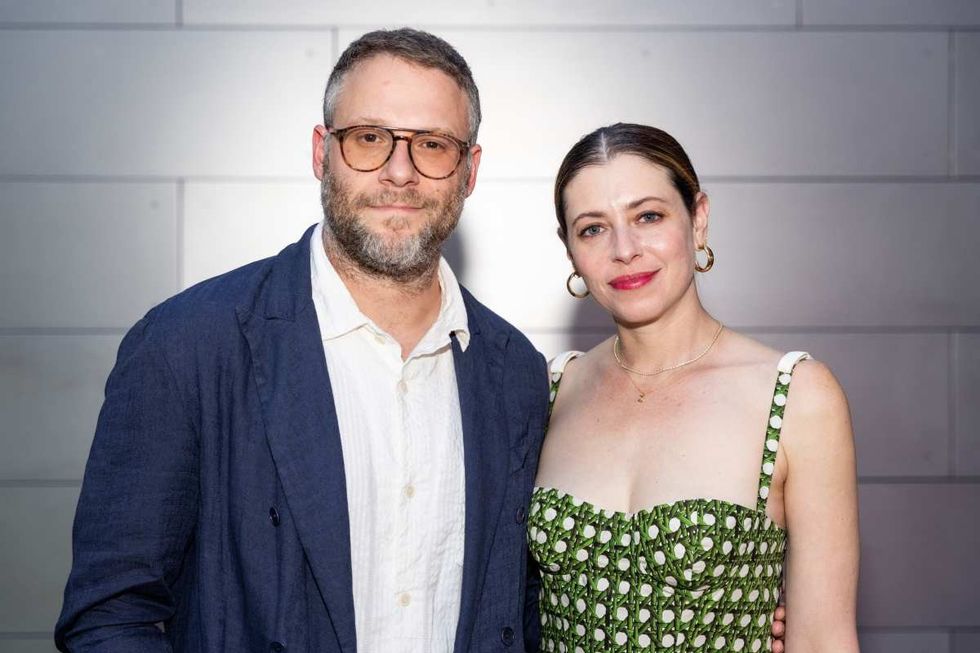For over 2000 years, Pythagoras' Theorem has been a cornerstone for architects, mountaineers, and homeowners, helping measure staircases, slopes, and more. It's widely recognized as one of the most vital theorems in mathematics. Despite numerous proofs over the centuries, a trigonometric proof was deemed impossible—until two African American high school girls made history.

The journey began with a mathematics contest at St. Mary’s Academy in New Orleans during the Christmas break in December 2022. Calcea Johnson and Ne’Kiya Jackson were motivated by the $500 prize announced by their teacher. They worked tirelessly to develop a trigonometric proof of the Pythagorean theorem, solving a 2000-year-old mathematical puzzle.
The original theorem appears on ancient Plimpton tablets from Babylon and Egypt, but most people recognize it from geometry class as "a² + b² = c²." It combines algebra and geometry, stating that “the sum of the squares of a right triangle’s two shorter sides equals the square of the hypotenuse.”
Numerous proofs for the theorem have been proposed over the years, but this is the first trigonometric proof. According to an abstract published by the American Mathematical Society, their proof relies on the “Law of Sines” and is independent of the Pythagorean trigonometric identity sin²x + cos²x = 1.
This brilliant proof by Johnson and Jackson contradicts mathematician and educator Elisha Loomis, who stated in his 1927 book “The Pythagorean Proposition” that no trigonometric proof of the Pythagorean theorem could be correct. Like Loomis, mathematicians, for years, believed that any trigonometric proof for this theorem would sidestep “circular logic” and would be a mere logical fallacy. But the New Orleans students have demonstrated that they were wrong on this.

When they began working on the contest, Johnson and Jackson knew the Pythagorean Theorem's equation A² + B² = C², but a trigonometric proof seemed impossible. After their discovery, they presented their findings at the American Mathematical Society’s semi-annual meeting in Georgia.
This meeting was attended by math researchers from many US universities such as Alabama, Georgia, Louisiana State, Ohio State, and Oklahoma, and the girls were the only two high schoolers in attendance. The society encouraged them to submit their work to a peer-reviewed journal. “This is just all very shocking to me,” Johnson told PEOPLE. “I didn’t expect our work to go anywhere. Then all these people started picking it up and wanted to interview me and wanted me to go here and there. I’m just like I didn’t expect any of it.”
Jackson and Johnson spent “3-4 hours a day” working on their calculations. “The garbage can was full of papers, which she would, you know, work out the problems and if that didn't work, she would ball it up, throw it in the trash,” Johnson's dad told CBS. Adding to it, Jackson’s mother said that most of the time, her daughter's work was beyond her understanding.
Johnson and Jackson said they think there are several reasons why people found their work so impressive. “Probably because we're African American, one,” Jackson said. “And we're also women. So I think-- oh, and our age. Of course, our ages probably played a big part.” The two girls have received appreciation from some of the prominent personalities, including former First Lady of America Michelle Obama, who wrote a post on X saying, “I just love this story. Way to go, Ne’Kiya and Calcea! I’m rooting for you and can’t wait to see what you all do next.”
They were also lauded by Governor Jeff Landry of Louisiana, who wrote on X, “Way to Geaux Calcea Johnson and Ne'Kiya Jackson! #LouisianaProud” Not only this, Mayor LaToya Cantrell of New Orleans presented the two girls with honoring certificates calling them “daughters of the city.”
At present, Jackson is studying in the pharmacy department at Xavier University in New Orleans, whereas Johnson is studying environmental engineering at Louisiana State University. “Our teacher said ‘This is really great. This is something that other mathematicians need to see’” shared Johnson.
This article originally appeared 4 months ago.













 Image Source: Seth Rogen and Lauren Miller Rogen co-host the HFC Austin Brain Health Dinner on September 30, 2023, in Austin, Texas. (Photo by Rick Kern/Getty Images for Hilarity for Charity)
Image Source: Seth Rogen and Lauren Miller Rogen co-host the HFC Austin Brain Health Dinner on September 30, 2023, in Austin, Texas. (Photo by Rick Kern/Getty Images for Hilarity for Charity) Image Source: Seth Rogen and Lauren Miller Rogen attend the 95th Annual Academy Awards on March 12, 2023 in Hollywood, California. (Photo by Arturo Holmes/Getty Images )
Image Source: Seth Rogen and Lauren Miller Rogen attend the 95th Annual Academy Awards on March 12, 2023 in Hollywood, California. (Photo by Arturo Holmes/Getty Images ) Image Source: YouTube |
Image Source: YouTube |  Image Source: YouTube |
Image Source: YouTube | 
 Image Source: In this handout photo provided by the National Science Foundation, the Event Horizon Telescope captures a black hole at the center of galaxy M87 in an image released on April 10, 2019. (National Science Foundation via Getty Images)
Image Source: In this handout photo provided by the National Science Foundation, the Event Horizon Telescope captures a black hole at the center of galaxy M87 in an image released on April 10, 2019. (National Science Foundation via Getty Images)
 Representational Image Source: Pexels I Photo by Nataliya Vaitkevich
Representational Image Source: Pexels I Photo by Nataliya Vaitkevich Representative Image Source: Pexels | Kampus Production
Representative Image Source: Pexels | Kampus Production
 Image Source: Destroyed vehicles lie near the rubble after the earthquake and tsunami devastated the area on March 16, 2011, in Minamisanriku, Japan. The 9.0 magnitude strong earthquake struck offshore on March 11 at 2:46 pm local time, triggering a tsunami wave of up to ten meters which engulfed large parts of north-eastern Japan. (Photo by Chris McGrath/Getty Images)
Image Source: Destroyed vehicles lie near the rubble after the earthquake and tsunami devastated the area on March 16, 2011, in Minamisanriku, Japan. The 9.0 magnitude strong earthquake struck offshore on March 11 at 2:46 pm local time, triggering a tsunami wave of up to ten meters which engulfed large parts of north-eastern Japan. (Photo by Chris McGrath/Getty Images) Representative Image Source: Pexels | Pixabay
Representative Image Source: Pexels | Pixabay Representative Image Source: Pexels | Stuart Pritchards
Representative Image Source: Pexels | Stuart Pritchards
 Image Source: Musician Keith Urban and actress Nicole Kidman arrive at the 2009 American Music Awards at Nokia Theatre L.A. Live on November 22, 2009 in Los Angeles, California. (Photo by Jeffrey Mayer/WireImage)
Image Source: Musician Keith Urban and actress Nicole Kidman arrive at the 2009 American Music Awards at Nokia Theatre L.A. Live on November 22, 2009 in Los Angeles, California. (Photo by Jeffrey Mayer/WireImage) Image Source: Keith Urban and Nicole Kidman attend The 2024 Met Gala on May 06, 2024 in New York City. (Photo by John Shearer/WireImage)
Image Source: Keith Urban and Nicole Kidman attend The 2024 Met Gala on May 06, 2024 in New York City. (Photo by John Shearer/WireImage) Image Source: Musician Keith Urban and actress Nicole Kidman arrive at the Oscars on February 24, 2013 in Hollywood, California. (Photo by Jeff Vespa/WireImage)
Image Source: Musician Keith Urban and actress Nicole Kidman arrive at the Oscars on February 24, 2013 in Hollywood, California. (Photo by Jeff Vespa/WireImage)
 Representative Image Source: Pexels | August de Richelieu
Representative Image Source: Pexels | August de Richelieu Representative Image Source: Pexels | August de Richelieu
Representative Image Source: Pexels | August de Richelieu Representative Image Source: Pexels | Djordje Vezilic
Representative Image Source: Pexels | Djordje Vezilic Representative Image Source: Pexels | Fauxels
Representative Image Source: Pexels | Fauxels
 Mount tai top gate (Representative Image Source: Getty Images | www.anotherdayatoffice.org)
Mount tai top gate (Representative Image Source: Getty Images | www.anotherdayatoffice.org) These ancient Chinese Buildings have been here on the side of Mt Tai the Holy mountain for decades and visited by thousands. One of most holy locations in China (Representative Image Source: Getty Images | jmoor7)
These ancient Chinese Buildings have been here on the side of Mt Tai the Holy mountain for decades and visited by thousands. One of most holy locations in China (Representative Image Source: Getty Images | jmoor7) Mount Tai (Mt Taishan) is one of the most famous mountain in China, it is also a UNESCO World Heritage Site. (Representative Image Source: Getty Images | DNeutral Han)
Mount Tai (Mt Taishan) is one of the most famous mountain in China, it is also a UNESCO World Heritage Site. (Representative Image Source: Getty Images | DNeutral Han) A comment about the challenging journey by
A comment about the challenging journey by 
 Image of a mother scolding a toddler in tears. (Image source: Archive Holdings for Getty Images)
Image of a mother scolding a toddler in tears. (Image source: Archive Holdings for Getty Images) Representational image of a baby gasping in bed. (Image source: Marc Romanelli for Getty Images)
Representational image of a baby gasping in bed. (Image source: Marc Romanelli for Getty Images)